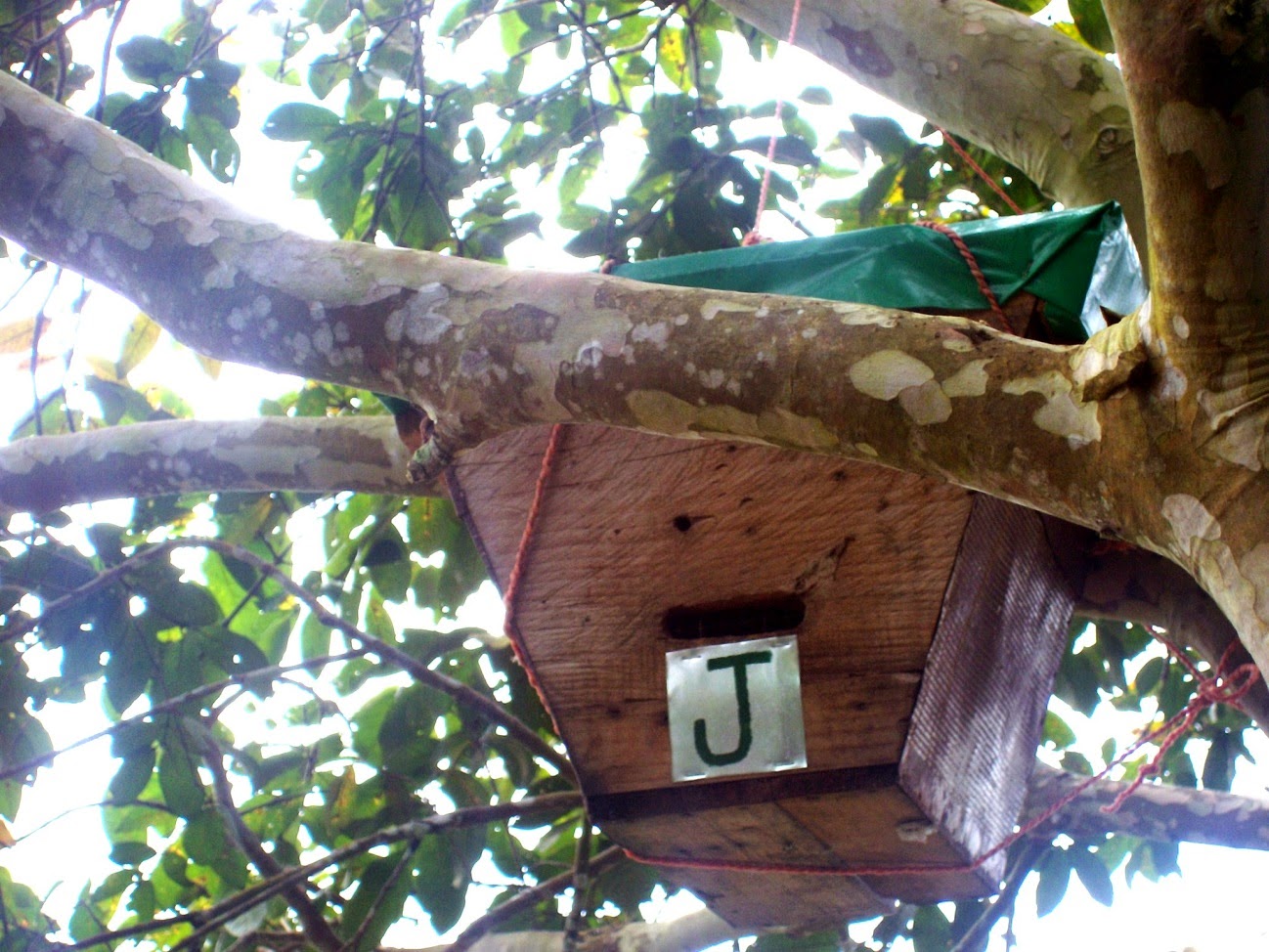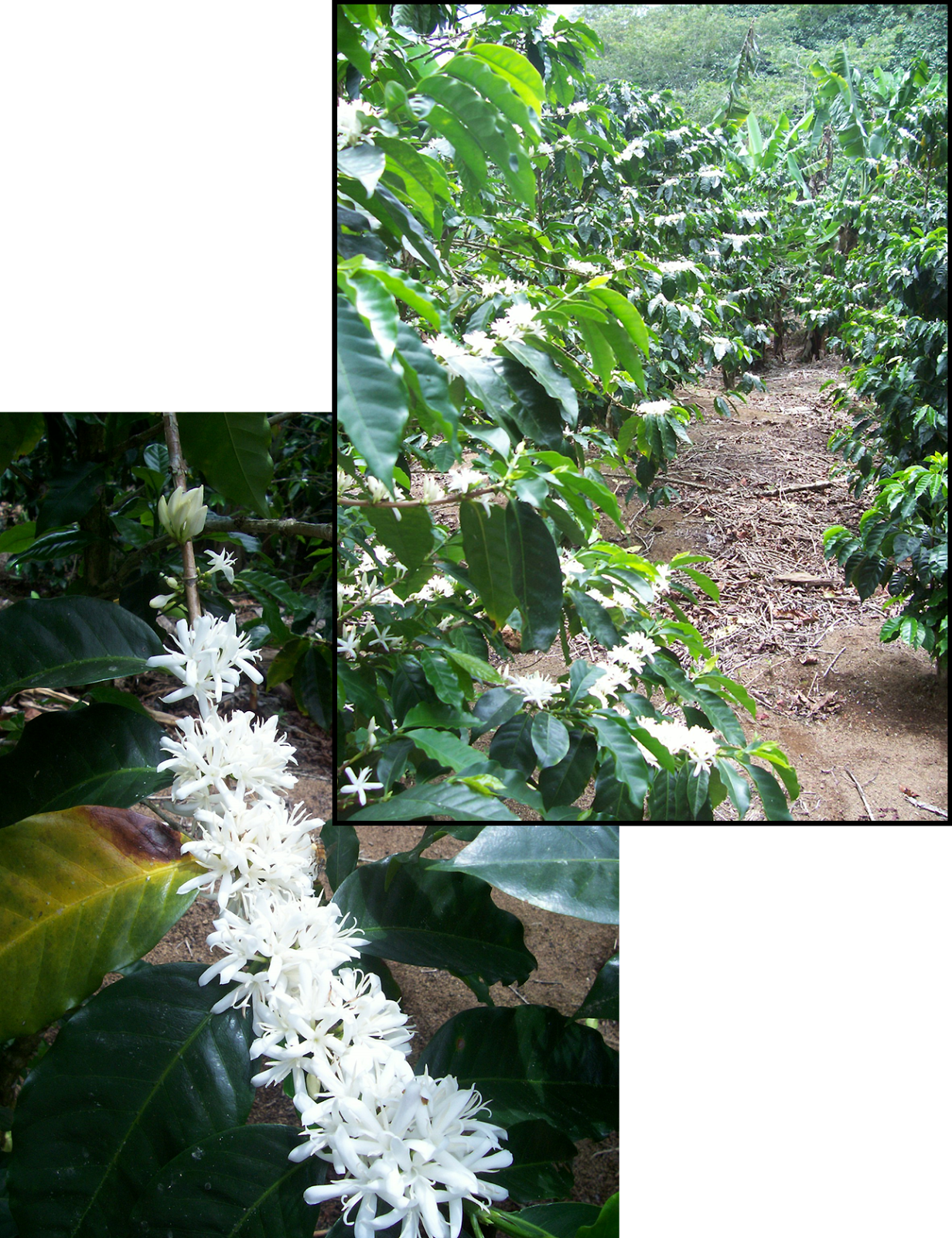The “coffee culture” is
something that has always interested me—but it’s not only because I thoroughly enjoy
my daily cups of coffee. This fascination is also not about the coffee culture
of the cafés with their espresso machines. It’s the coffee culture at its base
level in the mountains where coffee is grown and with the farmers who
produce it. Add bees into the mix and it’s even more intriguing.
This is a continuation of my
previous blog post, Musings
about Beekeeping and Coffee. This is a little trip through photos to the
coffee farm where I have an apiary of bees in top bar hives.
Ripening cherries on a coffee
plant. Ideally only the red cherries should be picked to assure a quality coffee.
The cherries cannot be stripped off the branch because of the damage it causes
to the formation of the next cycle of buds and flowers. Each cherry needs to be
twisted off the branch individually, making the harvesting very labor
intensive.
Workers measuring their day’s
pickings. After beginning early in the morning, the pickers end their day in
the early afternoon when they bring their sack (or sacks!) of cherries back to
the “beneficio,” the building where the coffee is pulped and washed. The
picking season is the time of plenty for the people of the mountains because of
the extra income earned from harvesting the cherries.
Next step—the pulping. During
this process the coffee cherries go through a mill which strips off the outside
red skin and inside white pulp to separate it from the bean in the center. They
fall into the pulping mill through a shoot from the area above where the
workers measure their day’s pickings. Just a little pressure from your fingers
can separate the bean from the skin and pulp of a ripe cherry.
The coffee beans are left to
soak in cement basins for at least a day after the removal of the red outside
skin. This process helps in washing off a slimy inside covering (mucilage) that
the beans have. After this washing the beans are dried. Eventually an inside
hull must be removed to get to the green bean in the center that is roasted.
Coffee beans drying on a cement
patio in the valley below the farm. Coffee dries much better in the valley because
of the hot, dry weather it has during the harvest season (you can actually find
cactus growing there!). The beans are continually raked and turned over to ensure
uniform drying.
The trail through the coffee to
the apiary. The bee yard is located at the edge of the farm, by the tall trees
in the background of the photo. The walk to the hives is about 150 meters from
where we park the truck by the coffee processing building. Everything is downhill
on the way back to the truck, making it a bit easier to lug out the buckets of
honey.
On the hill up above the bee
yard. The big trees in back of the hives are the liquidambar trees whose sap the
bees collect to form propolis. People use this resin for medicinal purposes. Inside
the tree line the land drops off about ten meters to the stream that flows
through here. The large leafed plants in the foreground are bananas, used as
temporary shade for the coffee plants until more permanent shade trees grow big
enough.
The rugged terrain is one of the disadvantages of the
coffee farm. It is basically all up and down making the hauling of swarm traps
filled with bees a bit of a chore at times. Here Marcos, the owner of the farm
and my associate with the apiary, has a couple empty trap hives that we were
taking to hang in trees.
The view of the valley from the
coffee farm. There are approximately 600 meters of difference between the
valley floor and the farm, which is situated at about 1200 meters above sea
level. The difference in temperatures makes the visits pleasant during the hot
dry season. During the wet season, however, there can be nonstop drizzle when
cold fronts come through this part of Central America.
The road up the mountain to the coffee farm. Although the farm is
only about eight kilometers in a straight line from town, it takes about 40
minutes to drive there because of the round-about route one must take and the
back-and-forth curves of the road. The going is also slow due to the steepness
of the road and the ruts and rocks one needs to deal with. During prolonged
heavy rains during the wet season, the road can actually be impassable until it
has time to dry out for a couple days.
Entering one of the top bar
hives to check on the bees and their efforts in producing honey. Unlike my top
bar hives in the valley below, these will fill their boxes from one end to the
other. Each box has about 35 bars of which half could be honey. The coffee
zones tend to be one of the best honey production areas in Honduras.
Trap hives are hung in trees
around the farm to catch swarms, from feral hives in the area but also from
some of the top bar hives that may swarm. The trap hives have the same
dimensions as the permanent hives to make transfer of the combs easy. I don’t
like to do splits because of the defensiveness of the Africanized bees.
Catching swarms is easy and I have lots of success doing so.
Marcos filling a bucket with
honey comb. Top bar hives use a simple cut and crush system for harvesting and
extracting the honey. The honey combs are cut off the bars and dropped into a
bucket. They are later crushed and the honey is allowed to drip out. I use a
simple filter I made from a five-gallon bucket. No honey extractor is used. Some
of the nicer combs are kept intact to be sold as cut-comb honey.
Honey comb!
My wife Sofia helping to check
the top bar hives and holding a comb filled with capped brood. My boxes are 12
inches deep, making each comb about the equivalent of a deep Langstroth frame.
Marcos
and I with the bee hives on the coffee farm. All the bees are Africanized but you get away without
putting up your veil until you are ready to actually open up the hive. Then
full protective equipment is required.
---Tom
Version in Spanish (versión en Español) in my
companion blog "Reflexiones Sobre Apicultura." More Musings about Beekeeping and
Coffee
























